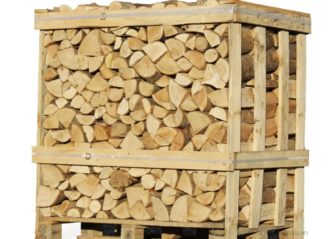Størrelsesguide til bukser: Ensuring the Perfect Fit

Introduction:
Choosing the right size of pants can be a daunting task, especially when shopping online. With the lack of physical fitting rooms, it becomes crucial to rely on accurate measurements and a good understanding of sizing charts. In this comprehensive guide, we will delve into the world of pants sizing, providing valuable insights and tips for online shoppers. Whether you are a first time buyer or someone looking to refine their sizing skills, this article will equip you with the necessary knowledge to make informed choices.
Understanding Pants Sizing:

Before we dive into the history and evolution of pants sizing, it is essential to understand the key elements of a pants size guide. Here are the crucial details to consider:
1. Waist Size:
The waist measurement plays a vital role in determining the right fit for pants. It is typically measured at the narrowest part of the torso, also known as the natural waistline. When referring to pants sizing, the waist measurement is usually expressed in inches or centimeters.
2. Inseam Lengt
The inseam length refers to the distance from the crotch to the hem of the pants. It is an important factor in achieving the desired leg length. Just like the waist size, inseam length is typically measured in inches or centimeters.
3. Rise:
The rise of a pair of pants refers to the vertical measurement from the crotch seam to the top of the waistband. It determines where the pants sit on the body and greatly affects the overall comfort and style.
4. Fit:
The fit of pants can vary from slim to relaxed, and understanding these distinctions is crucial in finding the perfect pair. Slim fit pants are characterized by a tighter fit around the hips and thighs, while relaxed fit pants offer more room for comfort and ease of movement.
Historical Evolution of Pants Sizing:
The concept of standardizing clothing sizes began to emerge during the industrial revolution, when ready-to-wear clothing became more accessible. However, it wasn’t until the mid-20th century that pants sizing took a more specific form.
In the 1940s and 1950s, the idea of vanity sizing gained popularity. Manufacturers started labeling clothes with smaller sizes to appeal to customers’ egos, which led to inconsistencies across brands. This practice created confusion among shoppers, making it even more challenging to find the right fit.
With the emergence of e-commerce in recent decades, the need for accurate and uniform sizing information became paramount. Today, many clothing brands offer comprehensive sizing charts on their websites, taking into account various measurements and providing guidance on how to measure different body parts accurately.
Structured Text for Featured Snippet:
To increase the likelihood of this article being shown as a featured snippet on Google search, the following structured text format can be used:
Title: A Comprehensive Guide to Pants Sizing: Ensuring the Perfect Fit
A. Introduction: The importance of choosing the right size of pants.
B. Understanding Pants Sizing:
1. Waist Size:
– How to measure the waist accurately.
– Importance of waist size in determining the fit.
2. Inseam Lengt
– Measuring the inseam correctly.
– Impact of inseam length on leg fit.
3. Rise:
– Definition and significance of rise in pants sizing.
– Different rise options available in the market.
4. Fit:
– Exploring different fit options, from slim to relaxed.
– Determining the right fit based on individual preferences.
C. Historical Evolution of Pants Sizing:
1. Industrial revolution and the rise of ready-to-wear clothing.
2. Vanity sizing and its impact on standardized sizing.
3. Influence of e-commerce and the need for accurate sizing information.
4. Introduction of comprehensive sizing charts by clothing brands.
Conclusion:
As an online shopper, having a good understanding of pants sizing is crucial to ensure a comfortable and well-fitted purchase. By utilizing accurate measurements and referring to sizing charts provided by clothing brands, customers can make informed choices and reduce the chances of returning ill-fitting garments.
Remember, each brand may have slight variations in their sizing, so it is always advisable to refer to their specific size guide before making a purchase. With this comprehensive guide as your ally, you can now confidently navigate the world of pants sizing, achieving the perfect fit every time.
















































